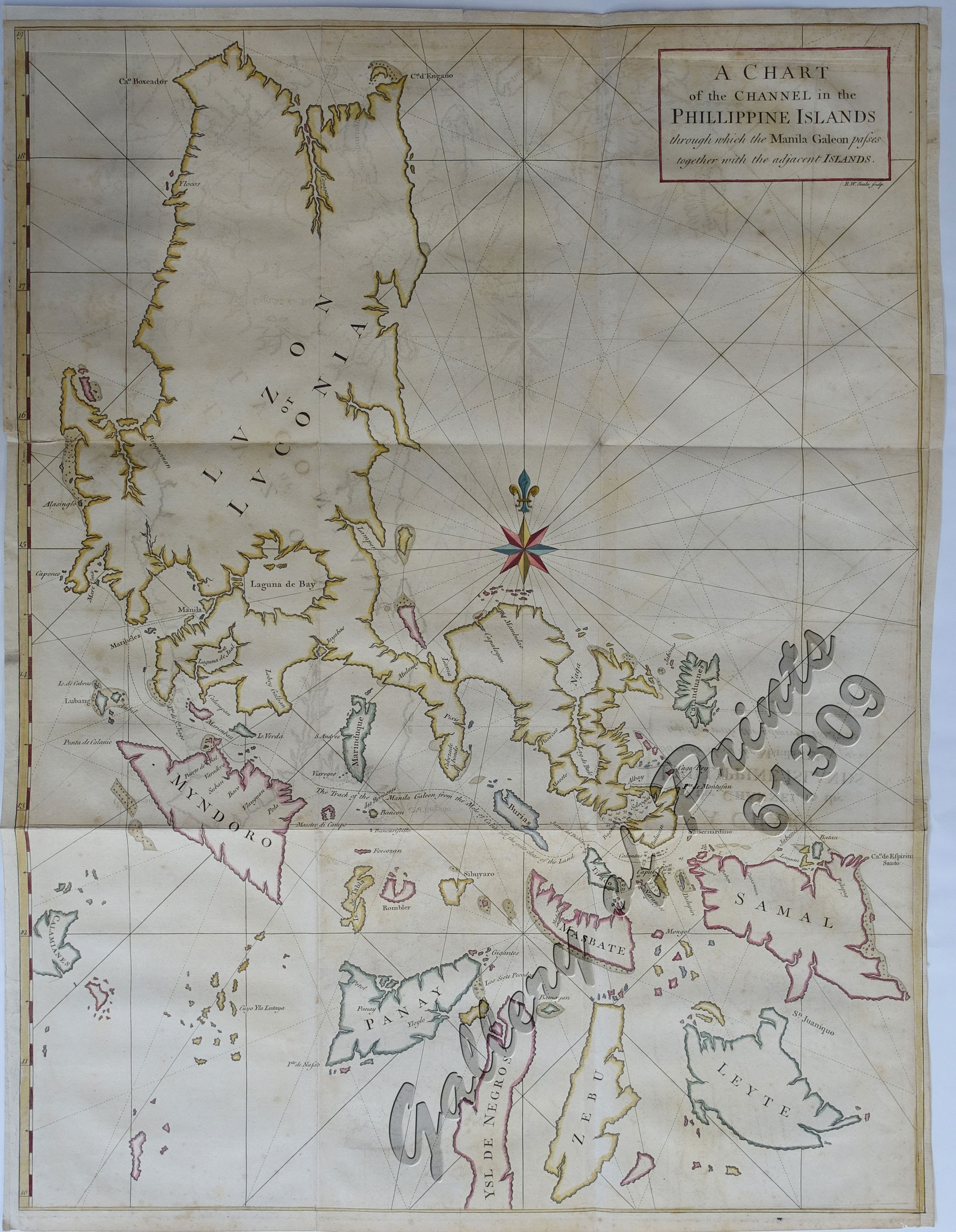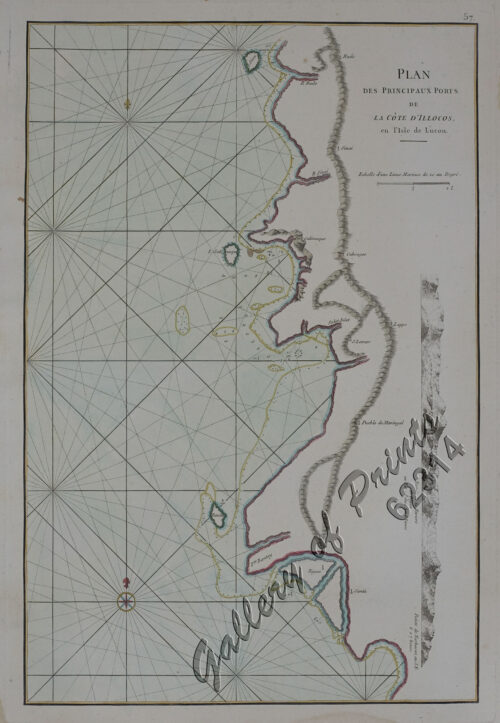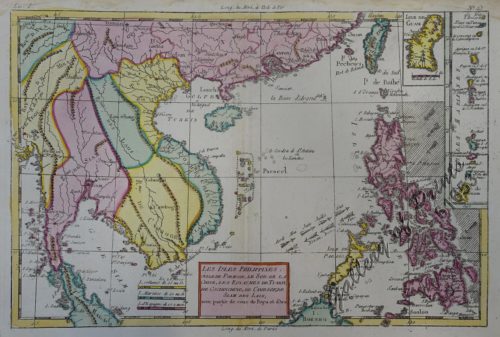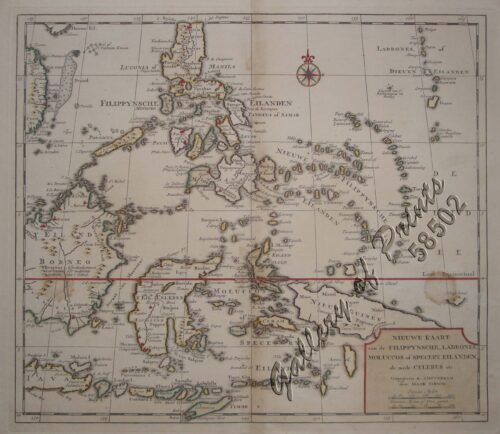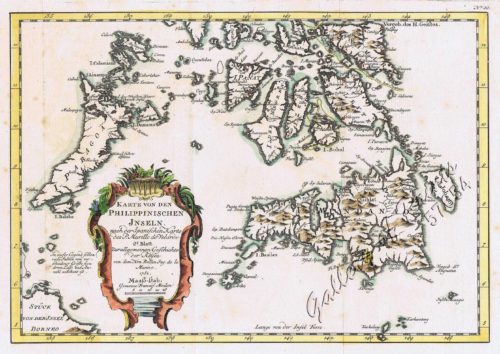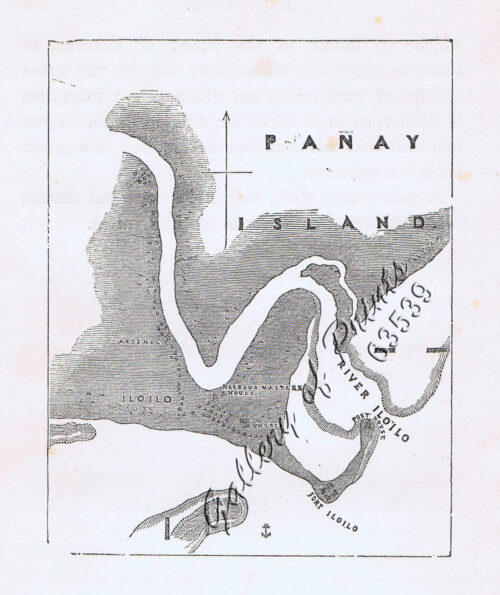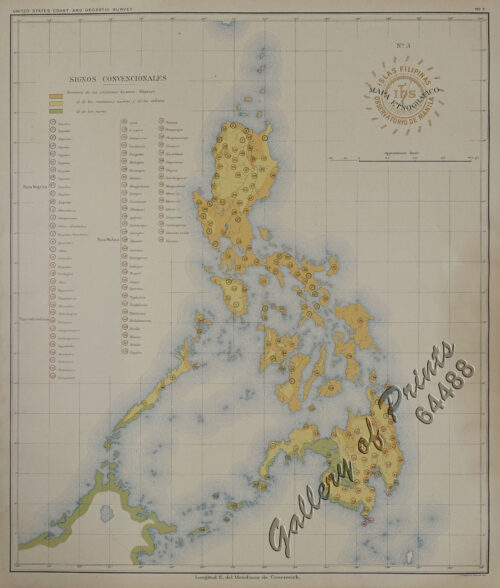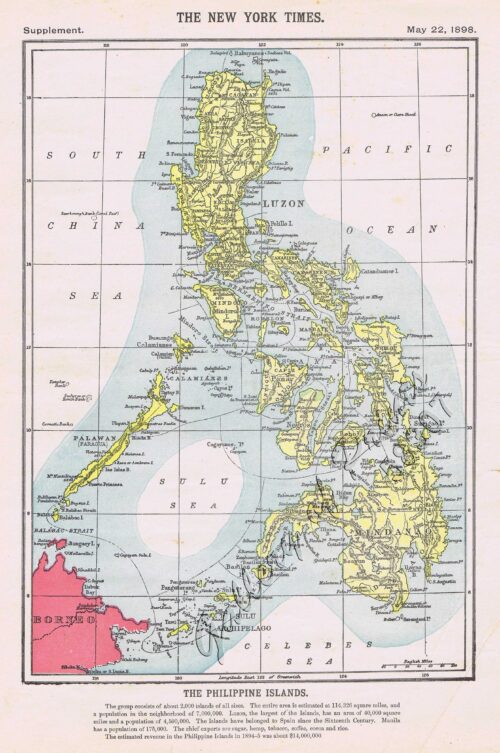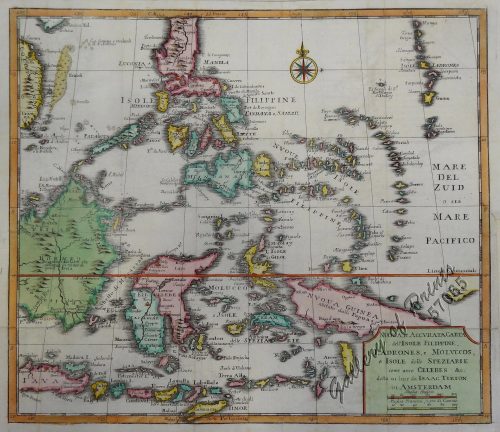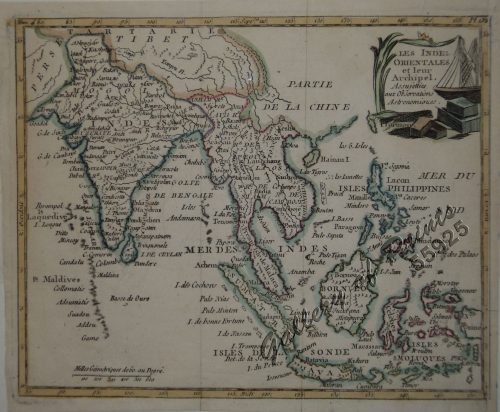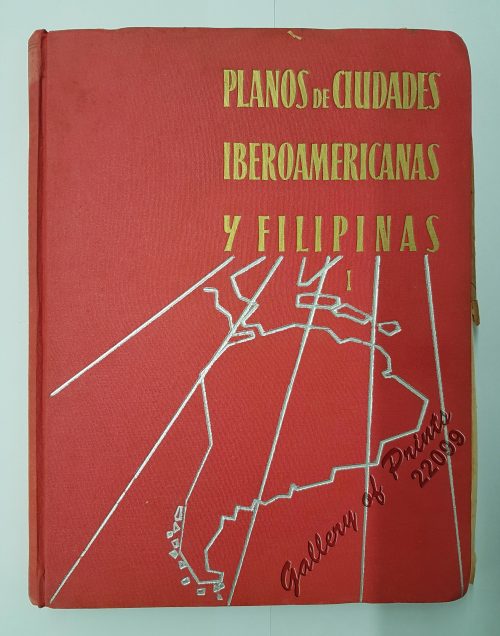A Chart of the Channel in the Phillippine [sic] Islands through which the Manila Galleon Passes Together with the Adjacent Islands
₱39,600.00
In Stock
In Stock
Description
hand-coloured copper engraving.
Map from ‘A Voyage Round the World in the Years MDCCXL, I, II, III and IV’ pl. 26; 9th edition; printed for D. Browe, J. Osborne and J. Shipton, J. Hodges, W. Bowyer, W. Strahan H.S. Cox, J. Ward, R. Baldwin, S. Crowder and H. Woodgate, 1756.
At the outbreak of the War of the Austrian Succession in 1740, George Anson (1697-1762) was sent to the Pacific with a squadron of six ships, his own being the ‘Centurion’, 60 guns. His instructions were to damage Spanish interests in the Pacific at a time when Spain and England were competing for maritime supremacy. By the time he reached Macao in November 1742, ‘Centurion’, was the only surviving ship in his squadron, the others having been separated or wrecked. After wintering there, he set off on 29 April 1743 in search of the Manila galleon ‘Nuestra Señora de Covadonga’, which – after cruising through Philippine waters for two months – he finally sighted off Samar in 20 June 1743. He immediately attacked the ‘Covadonga’, which was heavily laden with cargo from Acapulco, heading for the San Bernadino strait. During an attempt to escape, the Spaniards threw part of this into the ocean; yet Anson seized the ‘Covadonga’s treasure of Spanish dollars, silver and other goods. Their value was so immense that it financed the British War Chest to a large extent and therefore contributed to the subsequent success over the French Navy.

